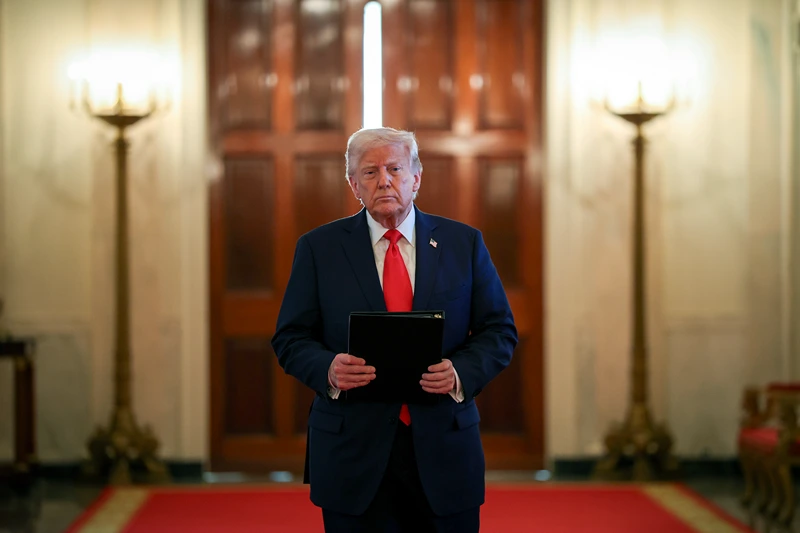
OAN Staff Blake Wolf
9:47 AM – Thursday, April 17, 2025
President Donald Trump reportedly called off an Israeli plan to strike Iranian nuclear sites next month in favor of negotiating a deal regarding Tehran’s nuclear program, according to The New York Times.
Advertisement
The Times report claimed that Israel developed the plan to attack multiple nuclear sites in May, with the goal being to “set back Tehran’s ability to develop a nuclear weapon by a year or more.”
The decision by President Trump was made after months of internal debate to pursue diplomacy or assist Israel in striking Iran’s ability to construct a nuclear weapon.
The report follows after Trump threatened military action if Iran refused to meet at the negotiating table, as the president stated last Wednesday, “If it requires military, we’re going to have military.”
“Israel will obviously be very much involved in that. They’ll be the leader of that. But nobody leads us, but we do what we want to do,” Trump added.
The Times report moved into speculation surrounding a potential Iranian response, stating that “Almost all of the plans would have required U.S. help not just to defend Israel from Iranian retaliation, but also to ensure that an Israeli attack was successful, making the United States a central part of the attack itself.”
President Trump reportedly informed Israel of his decision earlier this month, with Israeli Prime Minister Benjamin Netanyahu responding, arguing that an agreement with Iran would only work if the American side was allowed to “go in, blow up the facilities, dismantle all the equipment, under American supervision with American execution.”
Prior to the decision being made, the United States began moving military equipment into the Middle East to prepare for a potential strike, as well as to increase defensive capabilities against the Iran-backed Houthis in Yemen, which has been striking cargo ships in the Red Sea in protest of Israel’s war in Gaza.
Carl Vinson, an aircraft carrier, was moved into the Arabian Sea, joining the Harry S. Truman in the Red Sea.
Two Patriot missile batteries, a Terminal High Altitude Area Defense System, and around six B-2 bombers were sent as well.
Additionally, in a meeting which took place earlier this month, National Intelligence Director Tulsi Gabbard reportedly expressed concern for the American military equipment sent to the Middle East, citing an intelligence assessment which found that the increase in American weaponry in the region has the potential to “spark a wider conflict with Iran that the United States did not want,” according to the Times report.
Meanwhile, the United States and Iran held initial talks in Oman last Saturday, with both countries describing the conversation as “positive” and “constructive.”
A second round of talks is scheduled for Saturday, likely to be held in Rome, according to Reuters.
Stay informed! Receive breaking news blasts directly to your inbox for free. Subscribe here. https://www.oann.com/alerts
Advertisements below

















